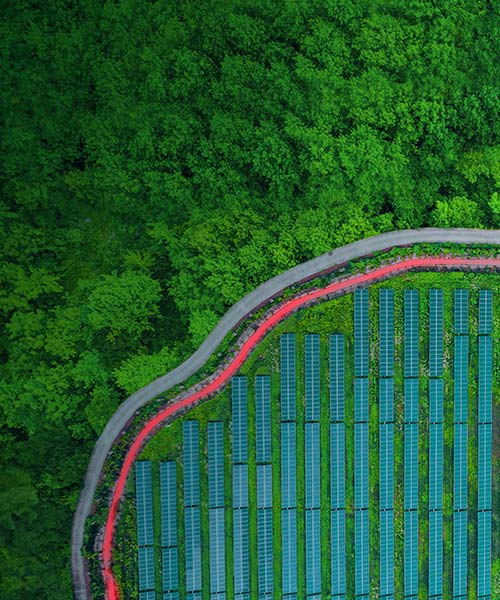February 14, 2024 • 4 min read
What trends will define the global power industry in 2024?
Joachim Meister discusses the opportunities and challenges facing the power sector this year.

“2023 ended with a key moment for the power sector,” says Meister.
“The commitments made at COP28, particularly to triple renewable capacity by 2030 and nuclear capacity by 2050, now align with the growth forecast required to reach net zero by 2050.
“These targets are ambitious. And the scale of investment and collaboration required to meet them will change the face of the global power industry, starting in 2024.”
Nuclear power is set to make a comeback
Coal fired power still dominates many energy systems. But shifting fully to renewables is not always feasible. In regions where renewable energy resources are less abundant, too far away from load centers or where space is an issue, nuclear power can provide critical capacity to electricity grids.
![]()
In my opinion, we’ll see a significant nuclear power comeback. Nuclear power can play a role in meeting our decarbonization ambitions. At least 11 new nuclear reactors are set to open in 2024, and several countries confirmed or renewed their nuclear ambitions in 2023.
“However, whether nuclear will be seen as sustainable or transitional will most likely be a continued debate,” he says. “In the European Union, there’s an ongoing debate between leaders and environmental groups across countries. But as it stands, it’s considered sustainable in the EU taxonomy.”
However, taxonomy is just one of the challenges the nuclear power industry needs to navigate.
“Financiers will look at carbon emissions as being one determining factor,” says Meister. “But it’s not the only one. We need to have solutions for nuclear waste management, too.”
Meister also predicts we’ll see a growing application of nuclear power technology in the industrial space.
“Another interesting development, particularly for next generation reactors, is additional end uses for nuclear energy, beyond power generation,” he says.
“Three out of seven US hydrogen hubs are planning to use nuclear energy to produce hydrogen. Like renewable hydrogen, nuclear generated hydrogen – also known as pink hydrogen – uses electrolysis technology with virtually no carbon footprint from operations.”
More hydrogen projects will proceed in 2024
Meister is optimistic that we’ll see hydrogen projects make it to final investment decision (FID) and reach the build stage in 2024.
“That is the biggest issue for hydrogen right now. Lots of projects are being announced and developed, but few are making it to FID.
“The American Internal Revenue Service (IRS) just came out with proposed guidance around the tax credit scheme for hydrogen projects,” continues Meister. “This will hopefully give some more certainty to investors. The decision makers for many US hydrogen projects have been waiting for these credit schemes for some time. If approved, this may unlock more opportunities for hydrogen in the US.
“However, offtakes and commerciality will continue to be critical factors for hydrogen projects.
![]()
On the global front, COP28 provided positive conversations around how alternative lower carbon fuels and other end uses can support the hydrogen industry. This demand will particularly come from hard to abate industries such as shipping, aviation, and steel manufacturing.
New approaches are required to solve lingering industry challenges
According to Meister, high interest rates and supply chain costs will continue to be a challenge.
“Higher interest rates have led to capital cost increases for renewable and nuclear power projects, which are typically capital intensive.
“Solutions that reduce financing costs will be important, too. These can include standardized products and digital platforms to reduce risk premiums and shorten execution times.”
Grid infrastructure is also a challenge. As Meister suggests, grids are not configured for increasingly distributed generation capacity.
“The best renewable resources aren’t where the load centers currently are. So, producers need to transport renewable power from wherever its generated to separate load center sites. Unless the industry can accelerate grid development, it’s going to be difficult in some jurisdictions to get the capacity into the grid.
“The way to solve this is greater collaboration across project stakeholders and broadening how projects define value, as outlined in our From Ambition to Reality series.”
Regulations will determine project speed
According to Meister, regulatory uncertainty is causing ripple effects across the power sector.
“Some projects are facing delays due to government regulations, which are impacting project investment decisions,” he says. “This includes questions on direct project funding support or the regulatory support to enable offtake decisions.”
However, the potential of regulatory changes is clear. In the US, the 2022 Inflation Reduction Act (IRA) has supported local economies and helped to progress renewable power projects.
“The IRA is so embedded in the legislation that no matter what way the 2024 election goes, it’s going to be hard to unravel,” explains Meister. “It’s good for the economy, local jobs, and lower carbon projects, and both main parties have been supportive.”
Finding skilled people for projects will be more important than ever
How quickly power projects can proceed this year will depend on the power industry’s ability to attract, train and reskill people.
“It’s hard to find skilled high voltage electrical engineers and electrical tradespeople to design and install the required grid connections,” says Meister. “That will become a bigger gap to fill over time. So, we’ve got to make progress on building the workforce this year.
“The availability of labor in the right locations is another challenge. The best renewable resources are typically in less populated areas, which compounds the resourcing challenge.”
Capability is also a hurdle to nuclear power development.
“The Western world has very limited nuclear power engineering and construction workforce as the nuclear power build out has been very limited in these geographies,” explains Meister.
“As a result, the industry needs a new generation of people, as the experienced members of the workforce near retirement,” he continues. “It’s going to be a big advantage for producers and contractors who can find the right people to progress nuclear power projects, so they’re operating in time to meet decarbonization targets.
“There is no single technological solution to producing the amount of lower carbon energy we need,” continues Meister. “But there’s momentum across multiple technologies in the power sector. And producers who push forward with more environmentally sustainable power projects this year, will be rewarded in the long term.”



